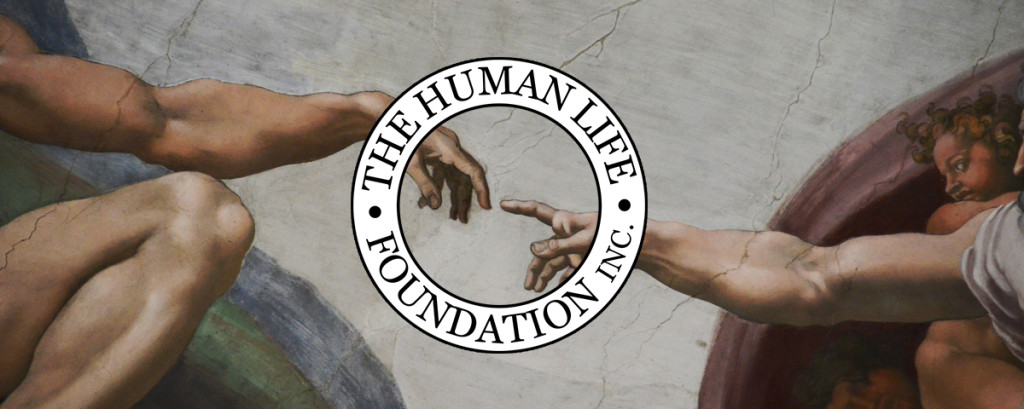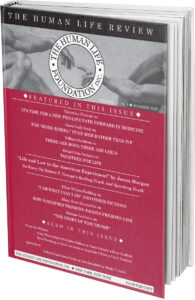Thoughts on Baby Thaddeus
You’d have to search pretty deep in the news to find the story about Thaddeus Daniel Pierce, born July 26. If you do find the story, it’ll likely be festooned with language about “miracle baby” or curiosity click-bait about “world’s oldest baby.” Just don’t expect much serious analysis. For background, see here.
What’s unusual about Thaddeus Daniel Pierce is that he was conceived in 1994. He was conceived when his currently adoptive stepfather was a toddler. He was conceived through in vitro fertilization (IVF).
This child was one of four conceived in 1994 by a woman who underwent IVF. Thaddeus wasn’t chosen for implantation, so he and two siblings were left in frozen storage. The conceived embryo implanted, his sister, is now 30 with a 10-year old child of her own.
The couple who originally manufactured these children left the three frozen embryos in cryopreservation storage, thinking she might one day want to become pregnant again. Time went by (for her, not the embryos), her husband divorced her, and she went through menopause. So, like people who get older downsize, clear out their storage lockers and donate their “old stuff,” that woman decided it was time to do something with her kids on ice. Not wanting to destroy them, she donated them to “Snowflakes,” an organization that tries to place frozen embryos for thawing, implantation, and adoption. (They even celebrate “Transfer Day!”)
The current Ohio couple adopted and Baby Thaddeus came into the world though not, as Cat Stevens might have observed, “in the usual way.”
Notice how Big Fertility likes to confuse the subject. Millions of conceived-but-not-implanted embryos are consigned to a senseless existence – alive but not quite – in order to foster the illusion that manufacturing babies through a technological process through IVF is “pro-life,” “loving” and “pro-child.” Obviously, to make the process palatable, they even call them “snowflakes.”
A baby is not a “snowflake.”
IVF poses huge existential questions, questions rife with major implications for society yet, in the name of “reproductive choice,” Democrats in principle deem them non-questions while most Republicans flee from them so as not to offend anybody. As usual, the real victims are the children.
Roe inculcated a mentality among Americans to pretend that the question of when life begins is insoluble. For the 49 years that decision was the law of the land, American law repeated the sophism Harry Blackmun penned in 1973: “We need not resolve the difficult question of when life begins” (410 US 113, at 159). The truth is that Blackmun did resolve it. He just wouldn’t admit to the deed.
So, if we continue to indulge the fantasy that when life begins must be approached with legal agnosticism, what was Baby Thaddeus from 1994-2025? Was he alive? Or dead? If he was alive, were his rights abridged for three decades? If he was dead, then was Pasteur wrong back in 1861 when he was thought to have discredited the idea of spontaneous generation?
Or, in the best American pragmatic approach, do we throw up our hands and say, “who knows (or cares)?”
Don’t get me wrong. I am glad Baby Thaddeus is alive. But that doesn’t mean I have to approve the process by which he came to be alive – or not to oppose its proliferation.
I hope he is healthy, since we have no evidence what delayed biological development might do to him or his procreative capacities. Do his cells think they are 30 or newborn?
As Italian commentator Thomas Scandroglio put it, “cryopreservation alters the temporal axis.” Baby Thaddeus has existed almost as long as his adoptive father, but will we now pretend he’s “one?” Chronology is bent to the human will, what Scandroglio calls “the theory of relativity applied to [procreation].” His sister, now in her 30s, theoretically could have been a surrogate to birth him, making her simultaneously “sister” and “mother.” Not only time but relationship loses all meaning, reduced arbitrary to however one wants to define them. It gives new meaning to what Bob Dylan sang of as “forever young.”
This is real. This is now. This is happening in America and the world. Do we intend to address it? Or will American lawmakers who, in the wake of the controversies Roe spawned, decided in the 1980s to leave America a “Wild West” (Jennifer Lahl’s term) of artificial reproduction continue to evade these questions?
Suspended animation was once the stuff of science fiction. As I previously observed, I grew up with Lost in Space. One of my favorite episodes was “The Condemned of Space,” about a prison spaceship where the inmates were all frozen. The clock regulating their sentences stopped, condemning them indefinitely to “the frozen sleep.”
Science fiction, like all fiction, requires suspension of disbelief, i.e., not asking too many questions that make the probability of the tale unwind. If those prisoners were really frozen for 400 years, we have to conclude one of two things: either lifespans were really long on their planet or you faced the situation where they would be reinserted in society 20 generations after their contemporaries were dead. (Imagine dropping a bunch of people who hung around with William Shakespeare and the Pilgrims into modern America!)
As Baby Thaddeus shows us, that’s no longer the theoretical. Some countries have sought to regulate this dilemma by treating frozen embryos like milk – attaching a “discard by” date, ranging from three years to indefinitely. This is hardly “pro-life” or “pro-child,” and genuine pro-lifers should not succumb to the siren call of IVF advocates, because long-term separation of conception from birth only degrades societal valuation of prenatal life. Paradoxically, it may achieve what Roe didn’t: taking the question of the beginning of life off the social table.










Professor Grondelski,
This is complicated. Snowflakes as I recall was started by very caring Christians recognizing that humans like snowflakes are each unique. The very first adopted frozen embryo Hannah has written her story. Hannah as I recall does not support IVF nor did her adoptive parents, but they valued protecting human life even if in a frozen state. I too have written about the concerns of frozen embryos in court cases that they are living human beings although their molecular movement is slowed on ice. We must treat all humans as humans. To stop the trend of creating frozen humans requires knowing what is being done.
Hi Rita,
Thank you for your thoughtful reply.
We are all children of God, our Father who creates and infuses our spiritual soul, as well as children of our human parents from whom he descend genetically.
My husband and I have two adopted children, and, by the grace of God, we are their adopted parents with the same rights and duties we have as the parents of our biological child.
Prenatal adoption is the same as post natal adoption. It is still not well understood or accepted by many today, but neither is post natal adoption well understood and accepted by many today.
We are all adopted children of God, and God is our true Heavenly Father who loves each one of us like his own beloved Son.
May we love each and every tiny human embryo, regardless of how he or she was conceived. What we do to the least of our brethren we do unto Jesus.
Please feel free to contact me for more information about the morality of embryo transfer and embryo adoption. I can be reached at elizabethrexcff@aol.com.